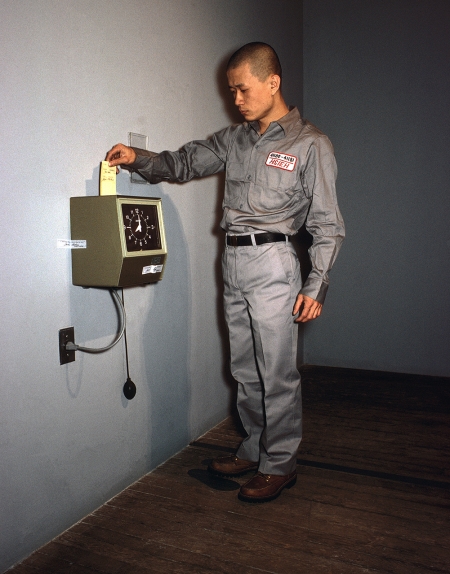
Taiwanese American artist Hsieh Tehching spent an entire year living inside his studio, from 1980 to 1981, resulting in the performance work One Year Performance. Every day for 365 days, Hsieh punched a factory-like time clock every hour, on the hour. He could not sleep or go outside for longer than 50 minutes at a time for that entire year. He shaved his head at the beginning to more easily visualize the passage of time in documentary photographs. He believed one year to be a meaningful and concrete measurement of time for people to contemplate. We all experience our lives in years with birthdays and anniversaries, for instance, and one year is the amount of time it takes the Earth to orbit the sun.
The materials currently on display at the Rubin Museum are remnants from the performance, including posters, witness statements, and a self-recorded video. These documents are the physical evidence of his time spent “working” and passing the hours and days. The materials also record the 133 times that Hsieh missed punching the time clock. By reporting these “missed” hours, Hsieh acknowledges an element of failure.
The issue of failure in this performance raises questions about the meaning of work itself: How can one fail at doing nothing? What does failure look like when it is repeated? The monotony of the artist’s days during this time speaks to the absurdity of labor and society’s definition of success.
One Year Performance is also about endurance and Hsieh’s powerful determination to complete the work. His transformation of seemingly limited circumstances into an exercise of endless possibility is a compelling artistic act.
14 1/2 × 12 × 1 1/4 in. (36.8 × 30.5 × 3.2 cm)
- https://dev.rubinmuseum.org/images/content/7665/1_time_clock__zoom.jpg
- https://dev.rubinmuseum.org/images/content/7665/1_time_clock__zoom.jpg

